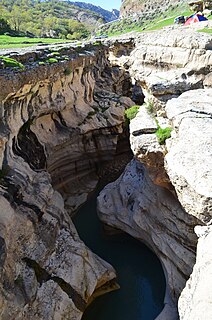
Ilam Province is one of the 31 provinces of Iran. It is located in the western part of the country in Region 4 and covers 20,164.11 km2 (7,785.41 sq mi), while sharing 425 km (264 mi) of the border with Iraq, and also bordering on the provinces of Kermanshah, Lorestan, and Khuzestan. The largest city and also the provincial capital is the city of Ilam with a population 194,030. As of 2016 census, the population of the province was 580,158 people and is the least populated province in Iran.
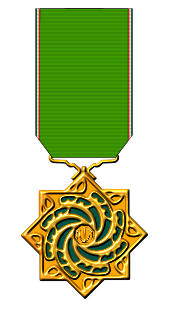
Order of Merit and Management is an Iranian state expertise order established by "Council of Iran Ministers" in November 21, 1990. The order has three classes, and awarded by President of Iran. According to Article 9 of the Regulations on the Awarding of Government Orders of Iran, the Order of Merit and Management is awarded to people who achieve "an exceptional success in management, distinguished activities, aiding the oppressed and deprived people and/or beneficiary use of utilities and/or offering exquisite ways".

Order of Service is an Iranian state general order. For the first time, it was established and awarded during the Pahlavi dynasty and during the reign of Reza Shah. After Iranian Revolution it was re-established by "Council of Iran Ministers" in November 21, 1990. The order has three classes. According to Article 12 of the Regulations on the Awarding of Government Orders of Iran, the Order of Service awarded by President of Iran to recognize "achieving distinguished success" in one of the following:
- Truly and consistent efforts in accomplishing responsibility and servitude
- Aiding the oppressed and deprived people

Order of Culture and Art is an Iranian state general order established by "Council of Iran Ministers" on November 21, 1990 and modified on June 27, 2007. The order has three classes and awarded by President of Iran. According to Article 17 of the Regulations on the Awarding of Government Orders of Iran, the Order of Culture and Art is awarded to those who "facilitate theirs thinking, passions and emotions to express deep Islamic and humanitarian concepts and to spread culture" in one of the following ways:
- Disseminating rich Islamic culture and eliminating society from foreign decadent culture
- Expanding the theoretical and disciplinary foundations of religious education
- Expanding national culture and revitalizing valuable social traditions
- Expressing creativity and presenting exquisite works of art or literature
- Pay particular attention to the country's cultural, artistic or literary heritage, so as to be effective in its restoration, preservation and utilization
- Introducing, describing, explaining, critiquing and presenting one of the artistic or literary disciplines internationally
- Inventing a new style in one of the artistic or literary disciplines
- Promote a culture of sacrifice and martyrdom in the community
- Creating remarkable and valuable artworks to convey the ideals and values of the Islamic Revolution and the Sacred Defense to future generations

Seifollah Kambakhshfard was an Iranian archaeologist, who specialized in archaeology and Ancient History of Iran.
Bathroom Kornasian Persian: حمام کرناسیان is from the Qajar period and is located in Dezful, Iran, south of the Kornasian neighborhood. This work is listed in the National Iranian Art Series with number 8477.
Order of Knowledge is one of the badges of honor in Iran. Its establishment dates back to the Qajar dynasty era under the name of "Order of Science" that later in Pahlavi dynasty era its name changed to "Order of Knowledge". Finally, it was reestablished in Islamic Republic era by "Council of Iran Ministers" on November 21, 1990.
Order of Research is one of the badges of honor in Iran, established by "Council of Iran Ministers" on November 21, 1990. According to "Article 8" of the "Regulations on the Awarding of Government Orders" of Iran, the "Order of Research" is awarded to individuals who have been the origin of fundamental transformation or rare service in the following ways:
- Introducing new research methods and techniques
- Studies and research that are the source of scientific change
- Finding new research methods
- Transfer of fundamental research to applied fields
- Every important innovation, originality, invention, and discovery
The Order of Work and Production is one of the badges of honor in Iran, established by "Council of Iran Ministers" on November 21, 1990. The order has three classes, and is awarded by President of Iran. According to "Article 13" of the "Regulations on the Awarding of Government Orders" of Iran, the "Order of Work and Production" is awarded to persons who have achieved remarkable results in industry or agriculture in one of the following areas:
- Increasing the production capacity of the country in terms of quantity and quality
- Proper use of technical facilities and economic resources
- Designing or implementing important industrial and agricultural projects
- Innovations and inventions to improve working and production practices and increase productivity
- Raising the level of technical and professional knowledge
- Creating the best Islamic and human relations in the workplace

National Organization for Civil Registration of Iran is one of the governmental organizations in Iran that is responsible for collecting information and population statistics of Iran. This organization with independent duties and functions is one of the subordinate institutions of the Ministry of Interior of Iran. The organization is responsible for providing basic registration information such as births, deaths and marriages, as well as issuing identity documents such as birth certificates and Identity certificate. The current head of the organization is Hashem Kargar. In Iran, the third day of Dey (month) has been named as National Organization for Civil Registration Day.

The Iran Technical and Vocational Training Organization or in brief I.R.T.V.T.O is one of the organizations affiliated to the Ministry of Cooperatives, Labour, and Social Welfare, which was formed from the merger of three educational institutions in 1980 in order to provide technical and vocational education. In addition to the central headquarters, this organization has 31 general administrations in provinces of Iran, an instructor training center, 552 Learning Center and over 11700 free technical and vocational schools. In order to achieve the latest science and technology news and to comply with international standards, the organization always tried to expand international relations, including with the International Labour Organization (ILO) and the International Organization for Vocational Training in other countries. In this regard, the organization, regardless of the interpretation of the overall organizational structure, carries out its activities only in the field of education, with the support of the research field.
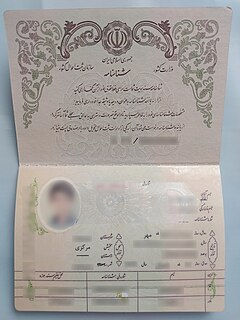
Iranian identity booklet, known as Shenasnameh, is one of the identity documents in Iran. This identity document is in booklet form and issued for Iran citizens at birth. The National Organization for Civil Registration of Iran is obliged to issue an identity booklet to every Iranian citizen.
The Iranian National Tax Administration or in brief INTA is one of the organizations affiliated to the Ministry of Economic Affairs and Finance in Iran which is responsible for handling the country's tax affairs. Among the tasks of this organization are reforming and mechanizing the country's tax system and implementing Value-added tax.
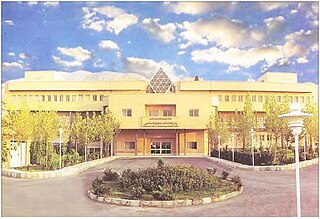
The Iran Atmospheric Science and Meteorological Research Center or in brief ASMERC as a member of the World Meteorological Organization (WMO) is a research center is affiliated with the Iran Meteorological Organization and is a subset of the Ministry of Roads & Urban Development of Iran.

The National Geoscience Database of Iran or in brief NGDIR is a scientific and research government agency in Iran which works in the field of Geology of Iran and centrally manages Geoscience data. This center was established in 1999 in the field of data collection authority with the aim of managing, preserving and sharing Geoscience data.

Engineer Nasrollah Khadem was one of the first prominent geological experts in Iran. He is the founder of the Geological Survey and Mineral Exploration of Iran. He played a major role in the development of Geology science and Mining engineering in Iran. Through his efforts, important mines were discovered and exploited in Iran.

College of Science is one of the University of Tehran's colleges. It is one of the oldest postgraduate centers in Iran, which was established in 1934 under the name of College of Science. It also called Science Campus. At present, the College of Science is the largest university unit among all Iranian colleges where basic science research is conducted. The College of Science has five schools and students study at the undergraduate, graduate and doctoral levels there. The main College of Science building is located in the central campus of the University of Tehran, Tehran, Iran. The college has 2600 students and 130 faculty members.
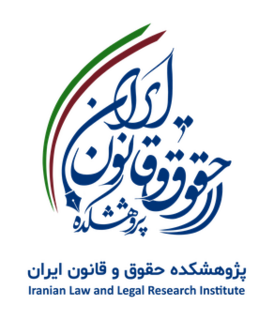
The Iranian Law and Legal Research Institute, formerly Allameh Legal Encyclopedia Research Center, is a scientific and juridical research institute, composed of four groups: encyclopedia writing, legal theorization and intellectualism, studies on social impact of laws, and studies on "extra" laws. Operating under the license of the Ministry of Science, Research and Technology of Iran, this research institute is one of the first legal entities to be recognized as a knowledge-based company by the Vice-Presidency for Science and Technology of Iran.

Pursuant to Article 58 of the Law on Internal Regulations of the Islamic Consultative Assembly, the Agriculture, Water, Natural Resources and Environment Commission of the Islamic Consultative Assembly is formed to perform its assigned duties in the fields of agriculture, water resources, livestock and poultry, fisheries, the environment and meteorology in accordance with the provisions of the regulation.














